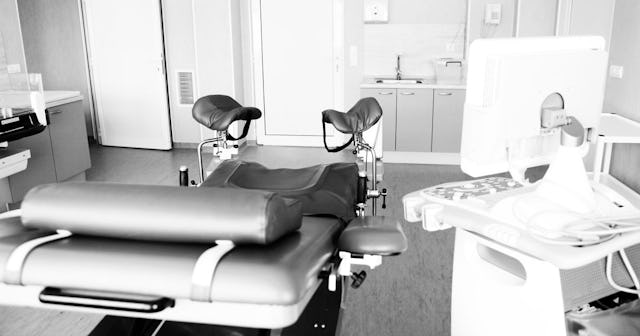Pelvic Exams Are Being Performed On Unconscious Patients Without Consent

Shawn Barnes was in his third year of medical training when he was first asked to do something to a patient for educational purposes that left him feeling what he describes as “ashamed.” For three weeks, up to 4-5 times a day (over 100 times), Barnes and other medical students were asked to, and did, perform pelvic exams on anesthetized patients without their consent or explicit knowledge.
Pelvic exams such as these are when a doctor places one to two gloved fingers inside an unconscious patient’s vagina, while the other hand applies pressure to the lower abdomen to feel the cervix, ovaries and uterus. Not for the patient’s health, but for the student’s education — without the patient’s consent, while the patient is unconscious.
Before Barnes assisted in a surgical procedure, he says he was required to meet with his patient to discuss the surgery before the procedure. Once the anesthesia was administered and the patient was unconscious, without prior consent, the attending or resident would ask the medical students to “perform a pelvic examination on the patient for educational purposes.”
Whereas this is rightfully alarming to the general public, many in the medical community view exams such as these as an “important tool for learning” and a “practice that is age-old and universally performed.”
For some med students, performing pelvic exams without consent while a patient is under anesthesia is something they feel expected to do when a superior asks it of them. Even if the opportunity to perform a pelvic exam occurs during a surgical procedure which is unrelated to sex organs.
jenjen42/Getty
Although there are some medical institutions, like Harvard, which have banned pelvic examinations on patients under anesthesia, 42 states still allow for the practice today. Senior Lecturer in social medicine at Harvard Medical School Dr. Marcia Angell tells Judy Foreman that the reason some doctors don’t ask for consent is because they are fearful some patients would not give their consent. “Which makes it even worse,” she said. “They have no right to use humans as tools. It’s exploitation.”
But according to Dr. Jennifer Goedken, the reason pelvic exams are performed under anesthesia is because they provide med students with a certain opportunity to learn that they do not get from pelvic mannequins which are “woefully inadequate” or paid volunteers.
When a patient is under general or regional anesthesia or sedation, their pelvic and abdominal muscles are completely relaxed, which sometimes provides students with their first experience to properly feel the internal sex organs. But one must ask, is it ethical for med students to perform such intimate and unneeded exams without consent for the sake of learning?
Even with the #MeToo movement still alive and stirring up news coverage today, as of now, there are no federal regulations which ban the practice of pelvic exams on unconscious, non-consenting patients. But a 2019 federal bill strongly supported by the NCLU is attempting to urgently change this by making it “professional misconduct for a provider to supervise or perform a pelvic exam on an anesthetized or unconscious patient without first obtaining the patient’s informed consent, unless the pelvic exam is part of the medical procedure or the patient is unconscious and the pelvic exam is medically necessary and required for diagnosis.”
In 2007, Ashley Weitz, a then-23 year old and rape-survivor, was admitted to an ER hospital in Utah with uncontrollable nausea. When all other methods to control her nausea had failed, Weitz’s doctor administered a medication to alleviate her symptoms which also sedated her. When she woke up, she noticed the ER doctor was examining her genitals and she began screaming. But it wasn’t until years after the incident until Weitz discovered the movement to ban pelvic exams on unconscious patients without consent and decided to speak up. “Not only did this feel like a violation, it absolutely was a violation,” Weitz tells VICE in a recent interview.
In 2003, Baltimore pediatrician Ari Silver-Isenstadt co-published a study in the American Journal of Obstetrics and Gynecology which showed more than 90 percent of students which were surveyed had performed pelvic exams without consent on unconscious patients. The study also found that students who had performed these kinds of exams during an obstetrics/gynecology clerkship believed “consent was significantly less important than did those who had not completed a clerkship.” A red flag that those performing these exams were becoming acclimated to a healthcare system which “assumes patients are not in control of their own bodies.”
The American College of Obstetricians and Gynecologists says that “if a pelvic examination that is planned for an anesthetized woman undergoing surgery offers her no personal benefit and is performed only for teaching purposes, it should be performed only with her specific informed consent obtained while she has full decision-making capacity.” The Association of American Medical Colleges goes on to deem the practice “unethical and unacceptable.”
In any other situation, touching an individual without their consent while they are unconscious would be assault. This is no different, and it seems teaching methods such as these only allow future medical professionals to dehumanize and disassociate a human’s life from the body which is laying on the operating table.
This article was originally published on